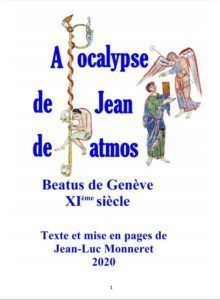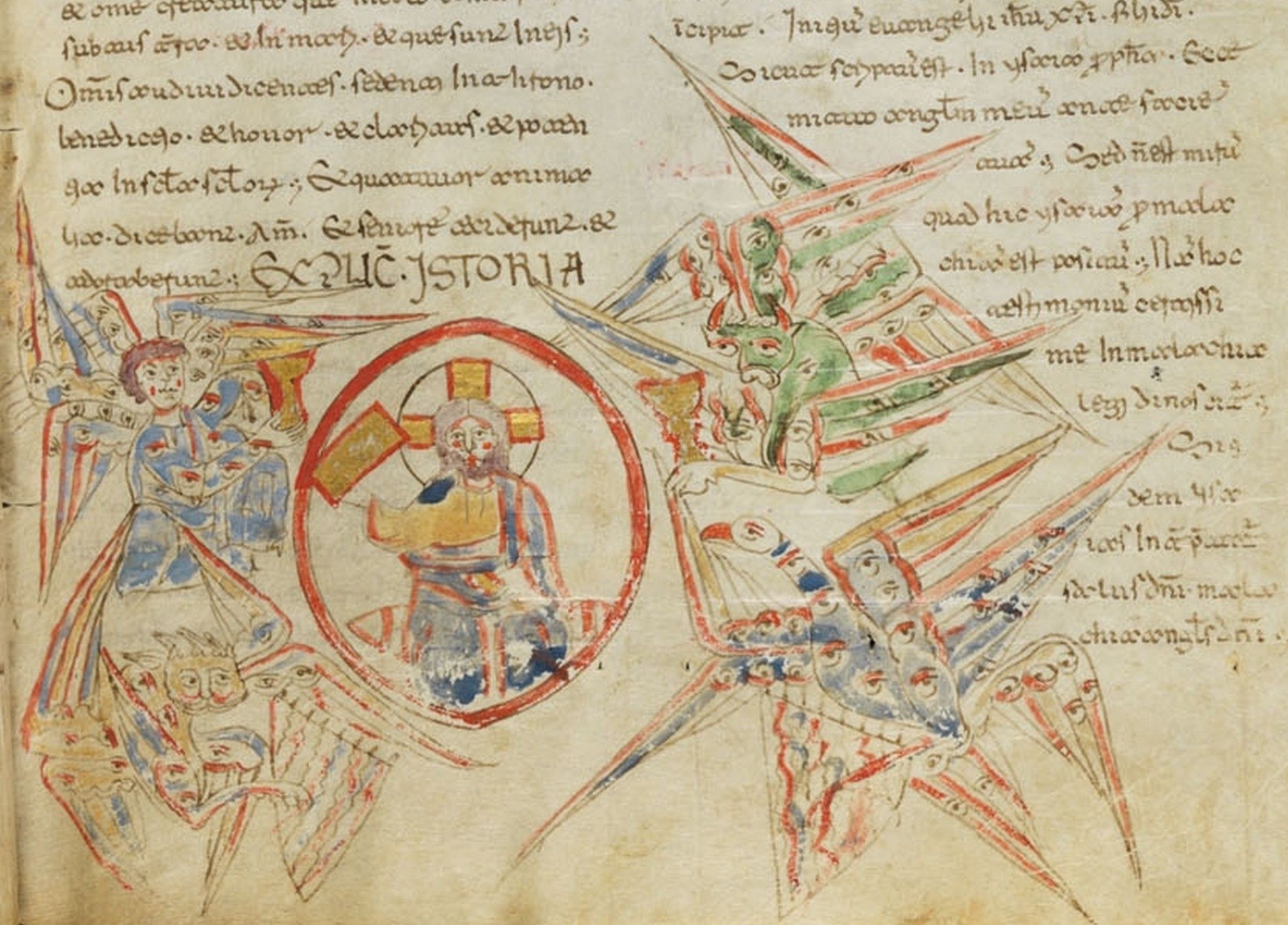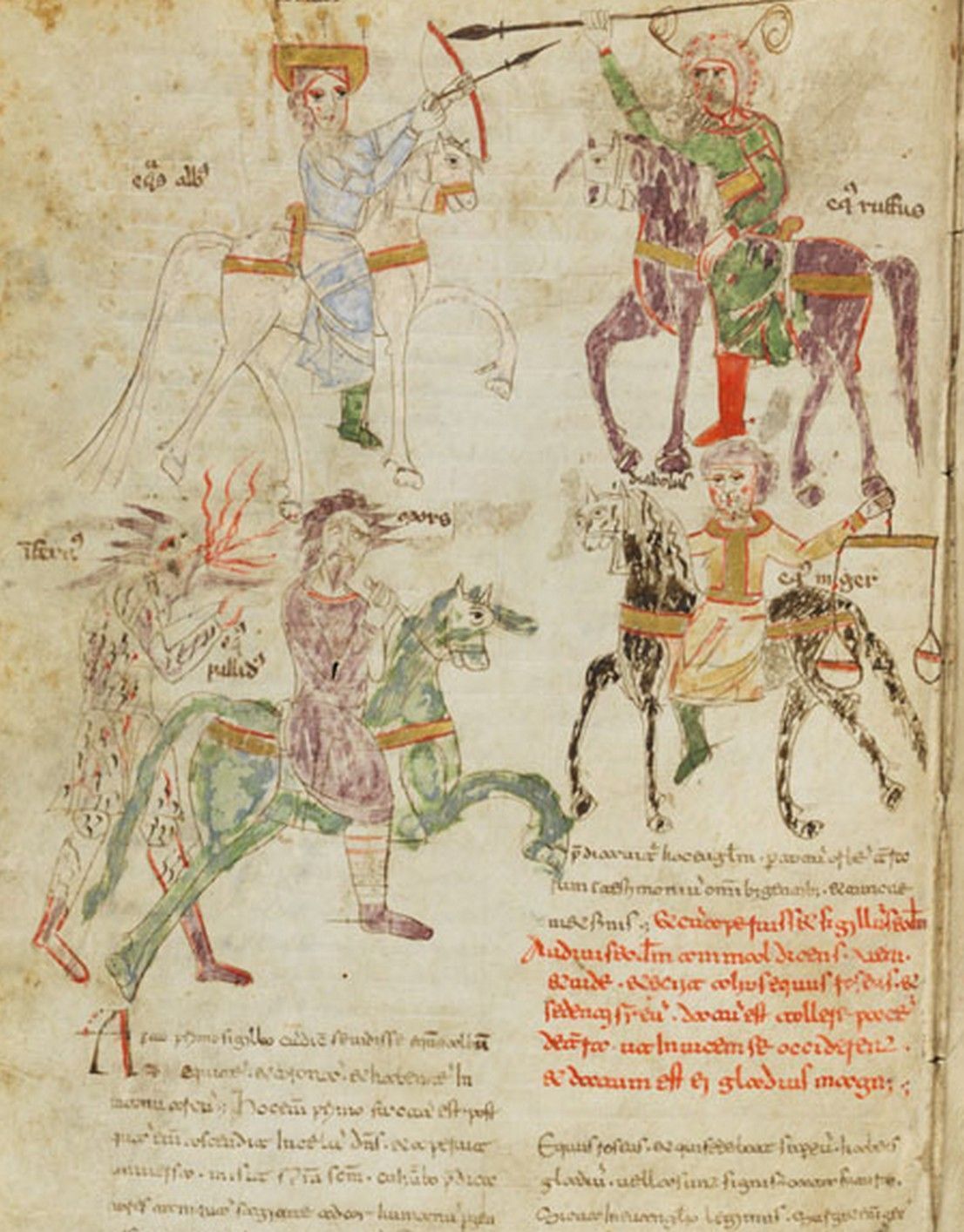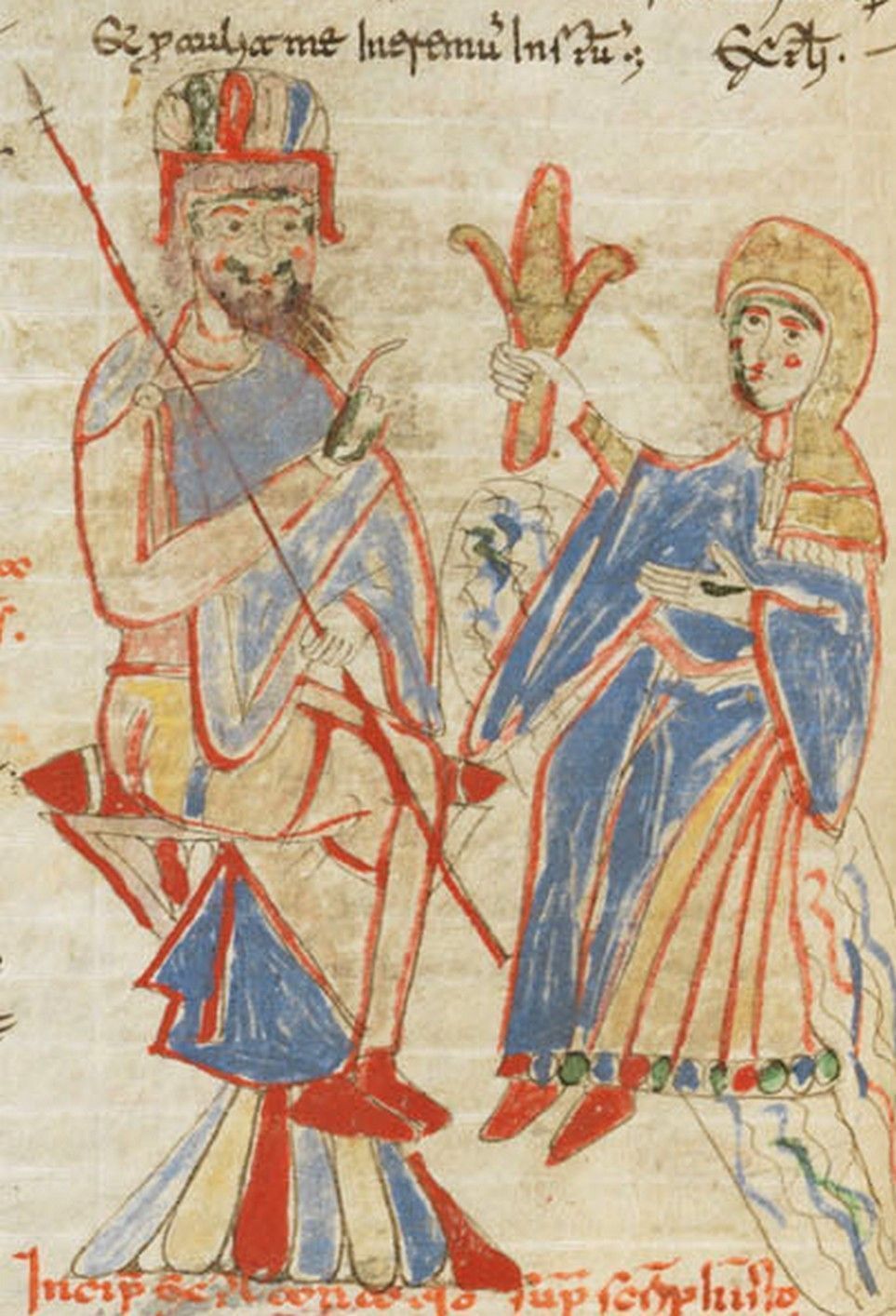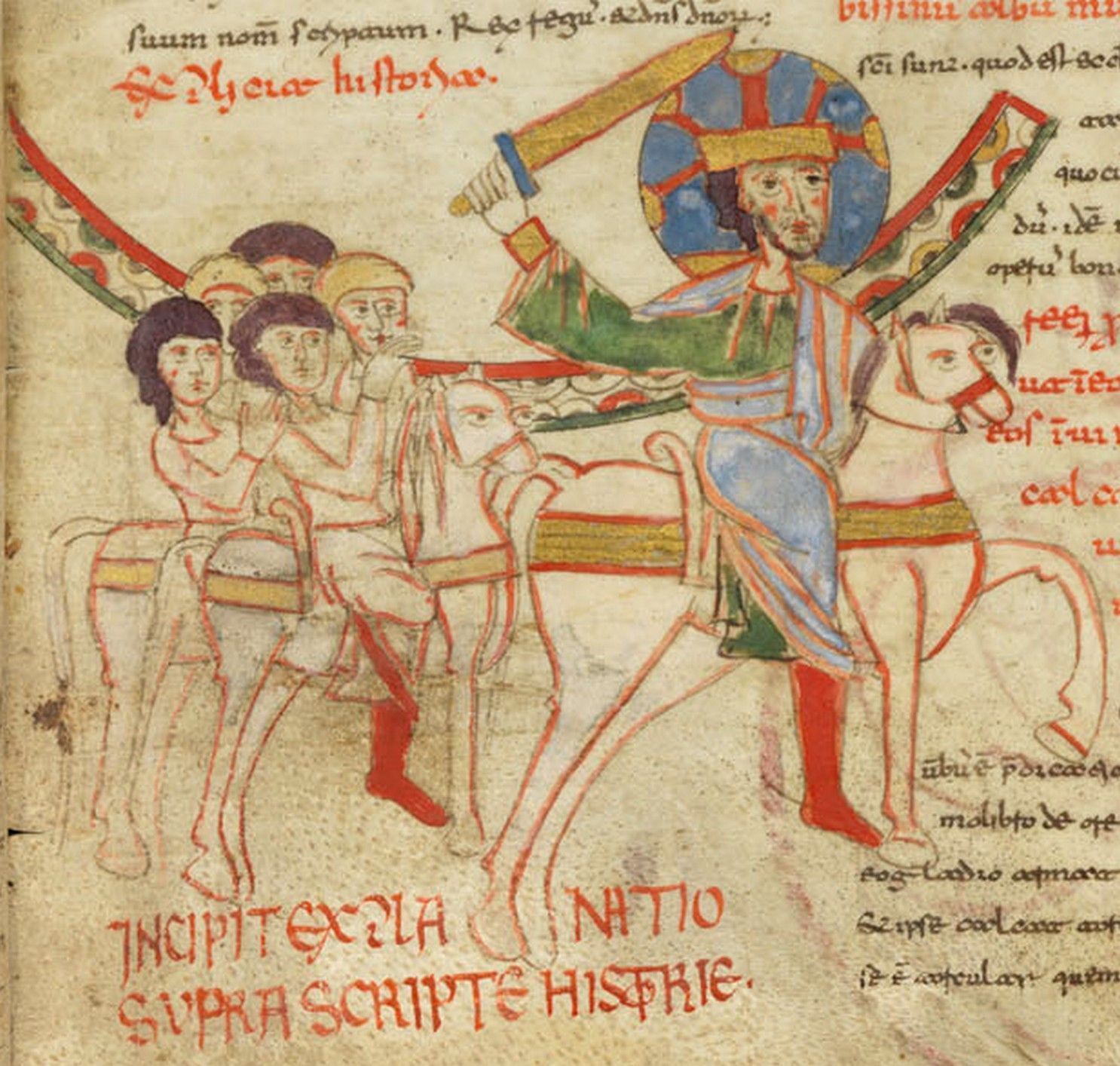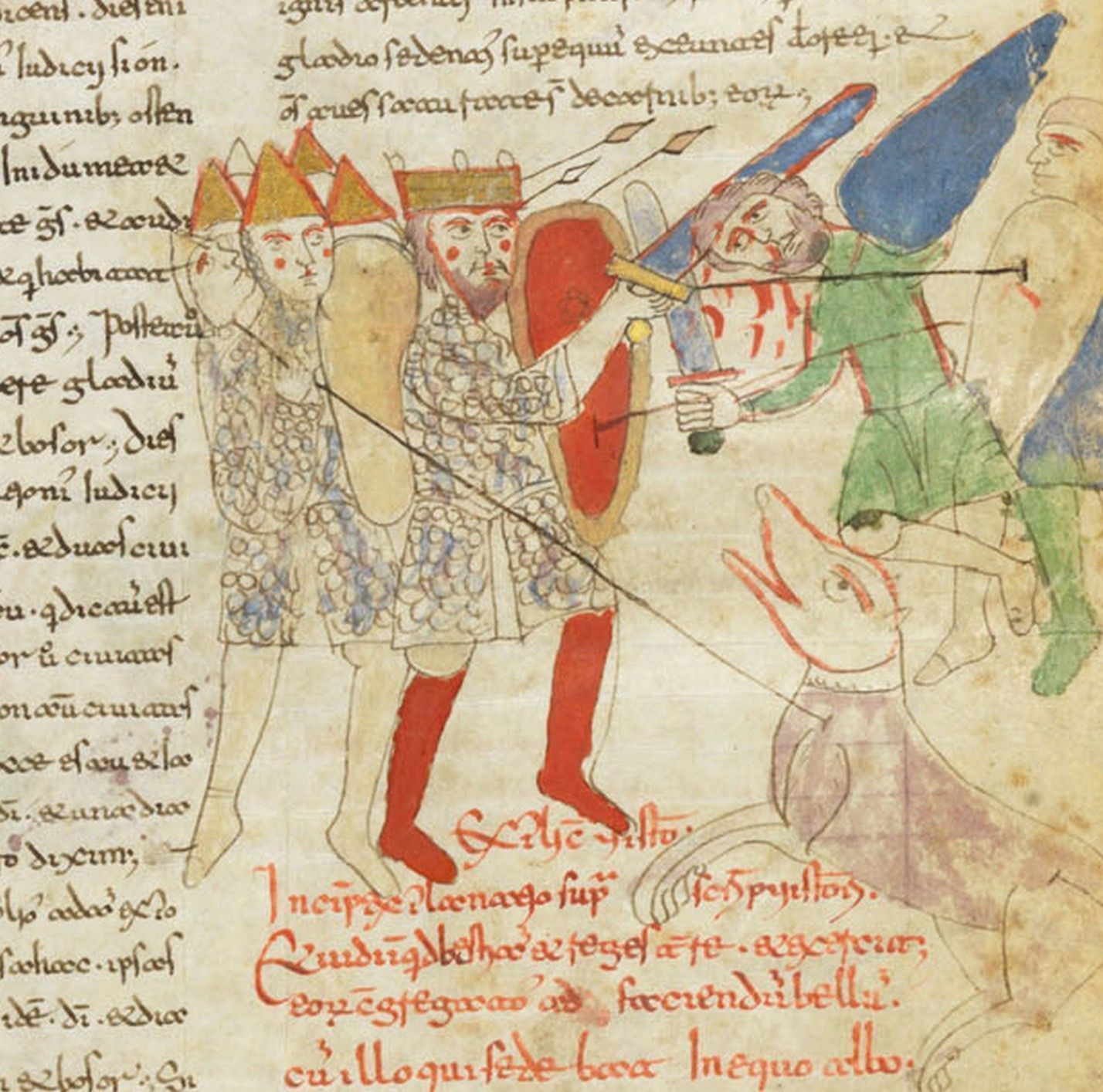BEATO DE GINEBRA

Notas Previas
Reference: Biblioteca de Ginebra, Ms lat. 357.
Dimensions: 250 X 160mm.
194 parchment pages in round and beneventana carolina letter to two columns with about 43-44 lines per page.
65 gold miniatures.
Facsimile under development: Full codex: Siloé, arte y bibliofilia.
Study of the Blessed of Geneva by our collaborator Jean-Luc Monneret in which all the images of the manuscript have been digitally cleaned. Click the image to access.
Entorno histórico
This surprising manuscript, unknown until now, has been added to a copy of Prisciano’s grammar by cataloguing the collection of ancient books that the Congregation of St.Francis de Sales left on loan to the Library of Geneva in October 2007.
Nothing is known of its origin, since the first thirty folios and the final folio are missing, although by the font it seems that it was created in the eleventh century in some Italian monastery of Benevento or some nearby area. It is even thought that it could proceed 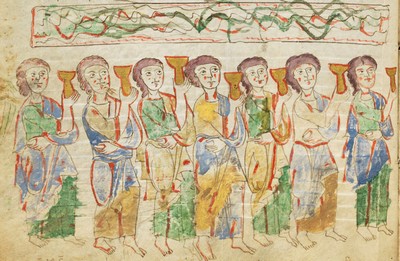 of Monte Cassino because of the similarities found in his writing with the magnificent codices from this abbey at the time of Abbot Desiderius, who later came to the papacy with the name of Victor III. However, the existence of a round Carolina letter in his first folios seems to indicate that some monk from northern Italy intervened, although an in-depth study remains pending to determine its origin, the history of the manuscript, and what could be the original from which it was copied and even to which textual and pictorial families can be assimilated.
of Monte Cassino because of the similarities found in his writing with the magnificent codices from this abbey at the time of Abbot Desiderius, who later came to the papacy with the name of Victor III. However, the existence of a round Carolina letter in his first folios seems to indicate that some monk from northern Italy intervened, although an in-depth study remains pending to determine its origin, the history of the manuscript, and what could be the original from which it was copied and even to which textual and pictorial families can be assimilated.
According to the first analyses made, the two manuscripts -the grammar of Prisciano and the Blessed- were united in a single volume before the seventeenth century and, according to an existing inscription in the Grammar, the set was in 1792 in the Abbey of Aulps (Upper Savoy), founded in 1093, secularized during the French Revolution and destroyed in 1824. From some additions to the manuscript, it appears that it was saved before the expropriation by one Jean Delerce-Mauris and later delivered to the Florimont Institute in Geneva, also belonging to the Missionaries of St.Francis de Sales, deposited in the Library of Geneva in 2007.
Descripción
This surprising find presents us with a first Blessed created in Italy -the other would be the Blessed of Berlin who is also believed to come from a monastery in central or southern Italy,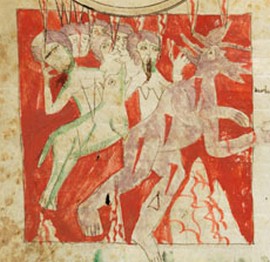 but already from the twelfth-century, that until it has been analyzed in depth raises us multiple questions.
but already from the twelfth-century, that until it has been analyzed in depth raises us multiple questions.
Indeed, although no copy of the Commentary to the Apocalypse by Beato de Liébana before the date on which this manuscript was dated is known to have arrived in Italy, there is no doubt at the time that most of it is written in a font -Beneventine- which was only used in central and southern Italy, although at first it was thought that it was of Spanish origin because of its many coincidences with the Visigoth letter, since both came from the uncial, which was soon discarded. This implies that either there was a Blessed in Italy who served as a model, although it might have been temporary, or that this was developed in a Spanish monastery by monks from southern Italy.
Nor has it been possible to study its similarities with any of the known blesseds, although there are features that seem evident, such as that its miniatures occupy only part of a column, except for three of them that are half a page or full page, which seems to indicate that it starts from an original of the first pictorial version, or the fact that the images appear on a white background and are not framed or integrated into a landscape, approaching the model of Florencio and very distant from the style of Magius. 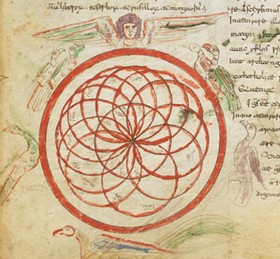 Showever the illustrations, which are placed in the usual manner of the blesseds between the “storia” and the “explanatio” and respect the structure and content of the original, have very little relation to the Mozarabic miniature, showing an aspect and composition little care in some cases.
Showever the illustrations, which are placed in the usual manner of the blesseds between the “storia” and the “explanatio” and respect the structure and content of the original, have very little relation to the Mozarabic miniature, showing an aspect and composition little care in some cases.
Although it is in good condition, another fact to note is that for its preparation a poor quality parchment with multiple imperfections was used, which seems to indicate that its creation was not motivated by an important order. Several copyists participated in its preparation and completed it in a single phase, in which text and images were included in parallel, which in some cases are mixed, which leads to think that at least some of his folios were illuminated by the copyist himself.
It is also not clear which text version has been split for the preparation of the Blessed of Geneva since, while the current year of the final period of his “History of Humanity” is 786, which would make think of the third version, but the lack of some of the texts customary in the Blesseds of this version seems to indicate that it corresponds to the first or the second.
Conclusiones
Bibliografía
Historia de España de Menéndez Pidal: Tomos VI y VII*
SUMMA ARTIS: Tomos VIII y XXII
L’Art Préroman Hispanique: ZODIAQUE
Arte y Arquitectura española 500/1250: Joaquín Yarza
Portales
Un Beatus décoúvert a Géneve: Paule Hochuli Dubois et Isabelle
Jeger
Les Institutions de Priscien et commentaire de l?Apocalypse, de
Beatus de Liébana: Bibliothèque de Genève




